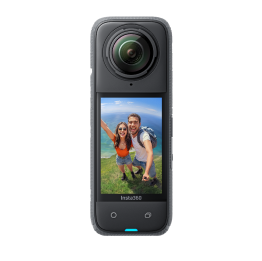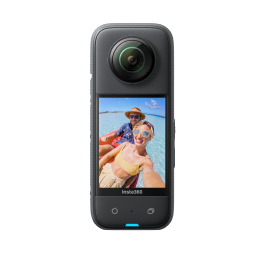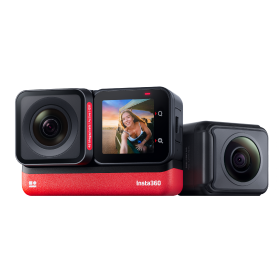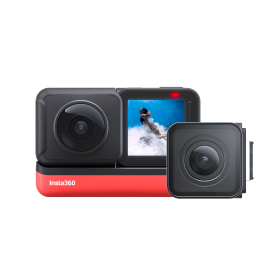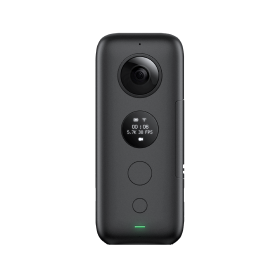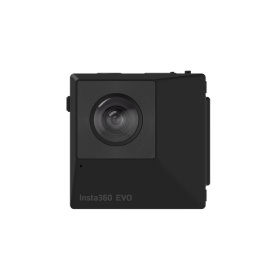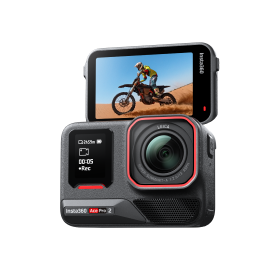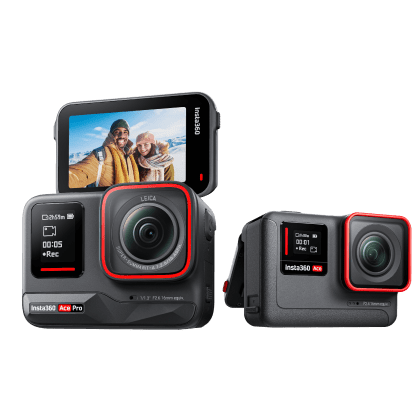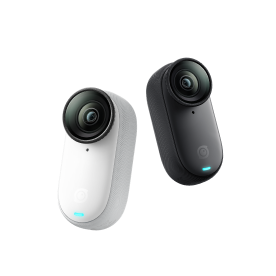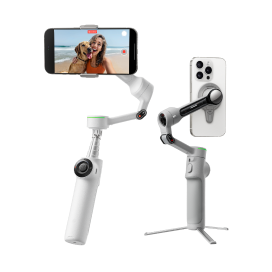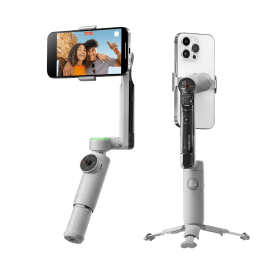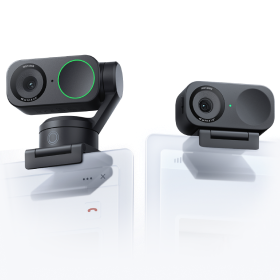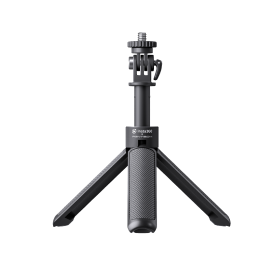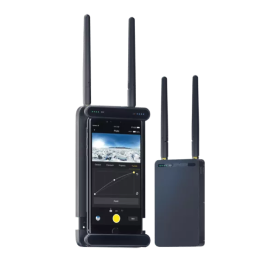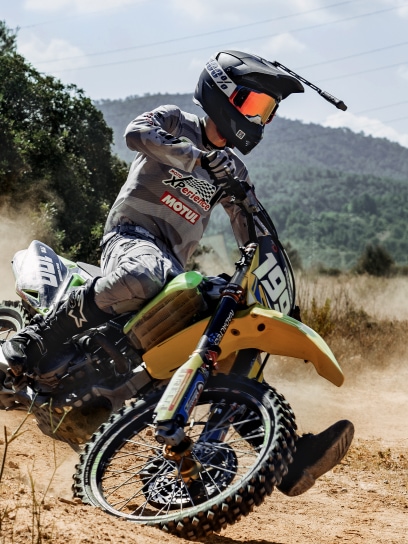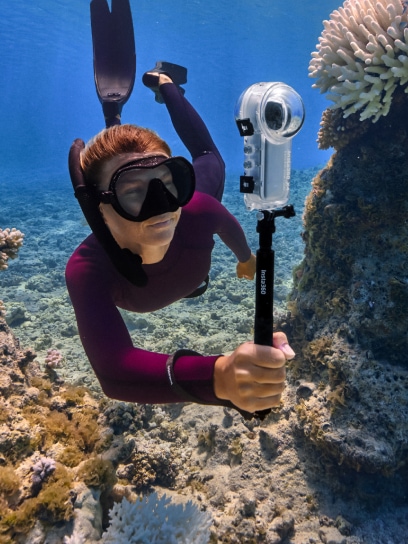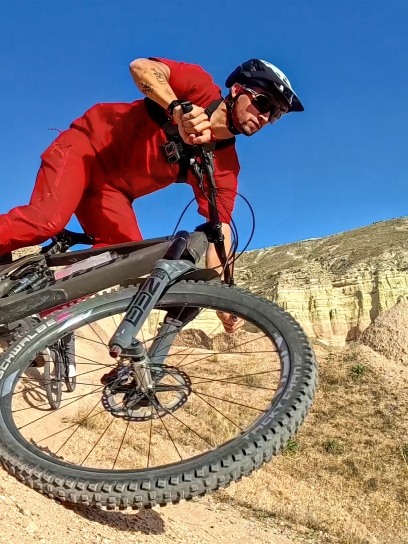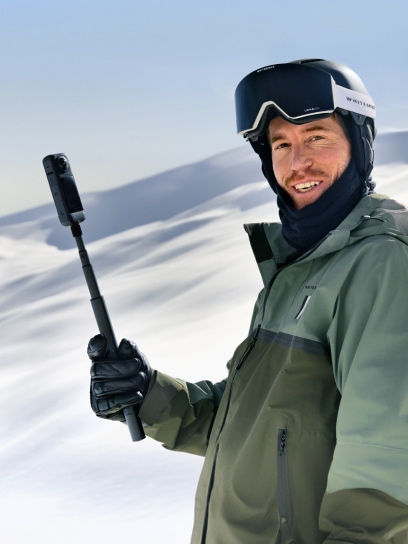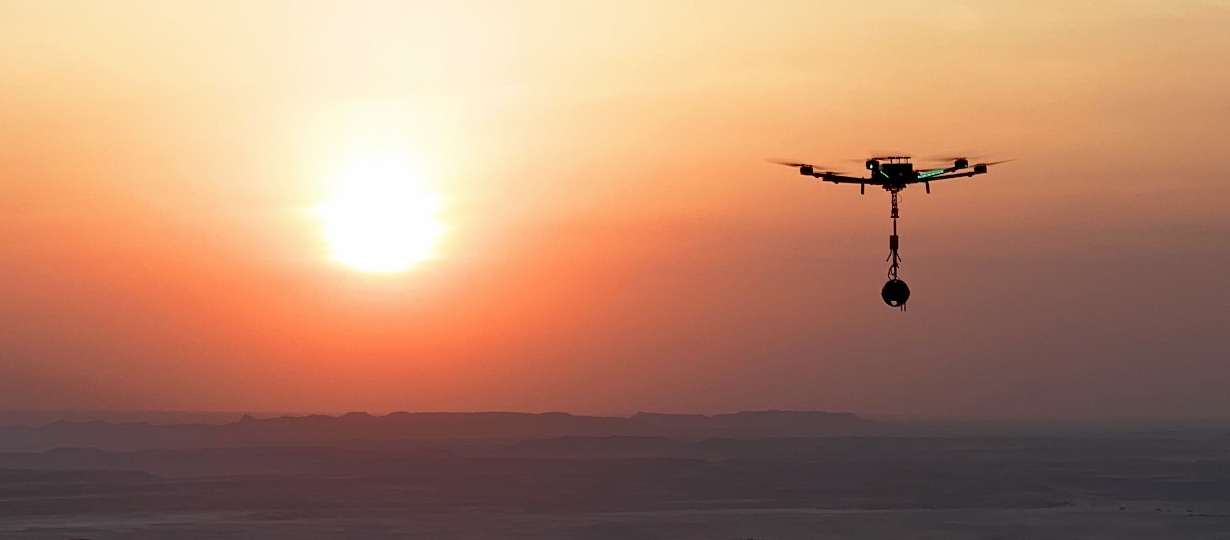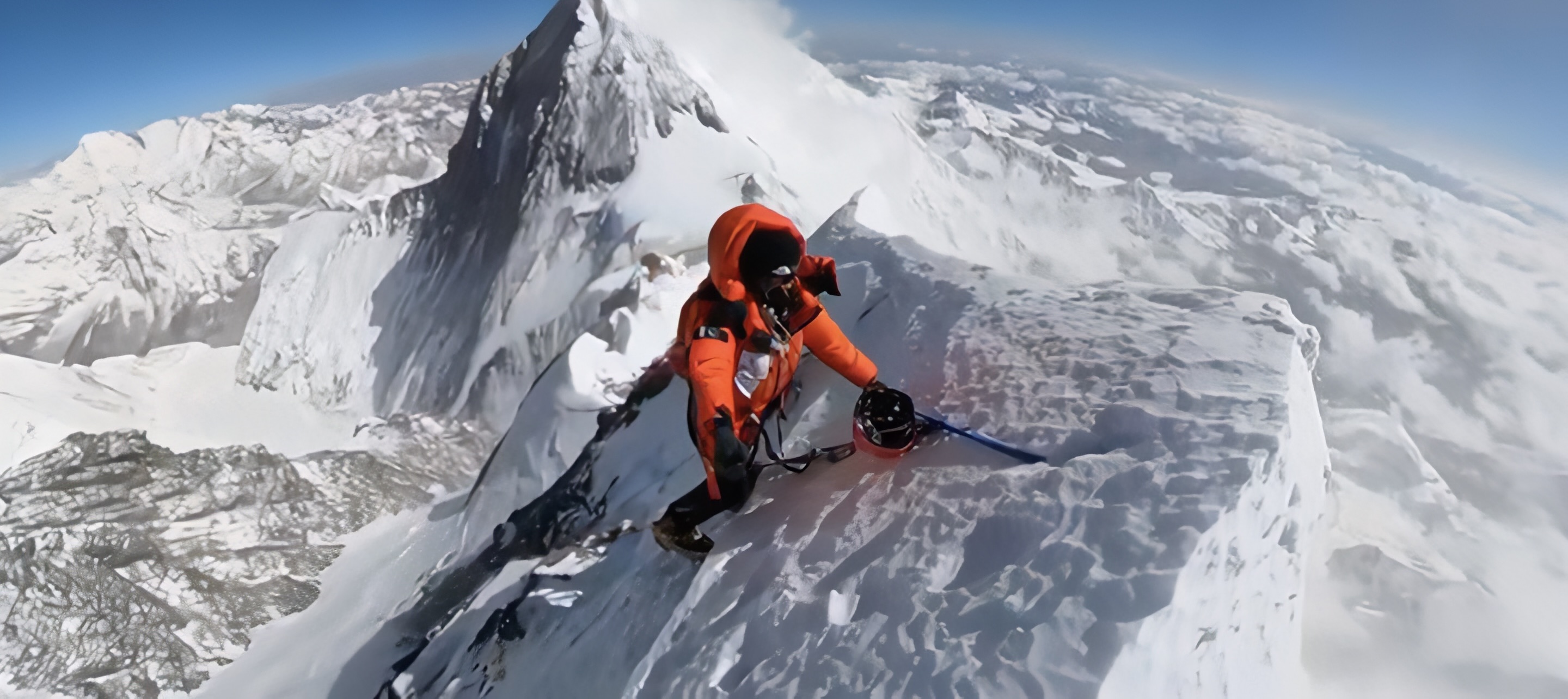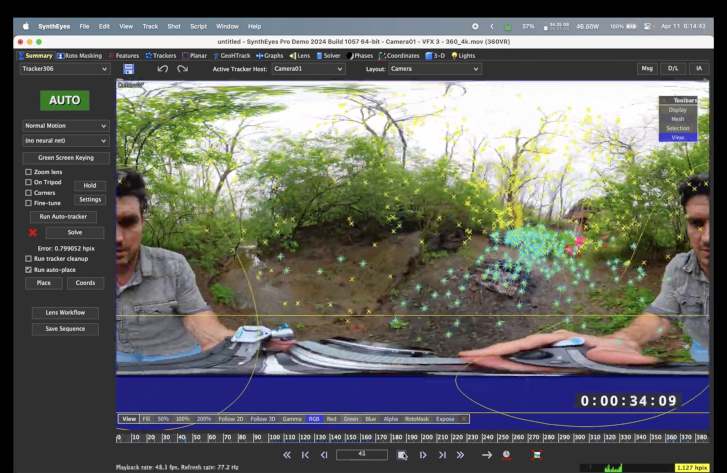Drones and 360 cameras are a winning combination for getting stunning aerial shots with unique angles and vivid colors. But to stay competitive in a growing industry, drone photography businesses must keep on top of current 360 video trends.
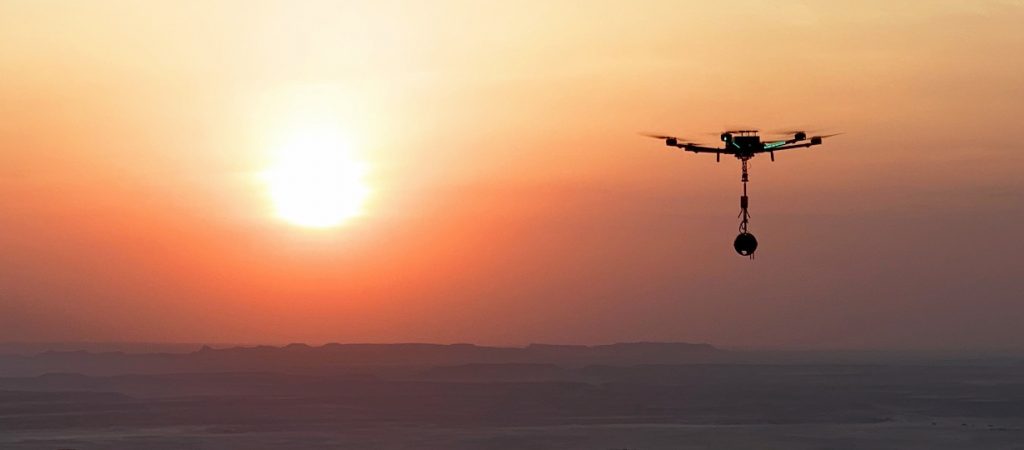
Drones can be a very cost-effective tool for videographers, eliminating the need for traditional cranes and jibs. But like with any new technology, there is a learning curve to using drones and 360 cameras together most effectively. Camera weight and image quality are often the biggest limiting factors for drone photography. A too-heavy camera can weigh down the drone and decrease flight times.
Action cameras are a common drone camera choice for their compactness. But what if you need premium 360 drone videos at a much higher quality than standard 1080p? How can you get high-quality footage and still have the convenience and creativity of a quick and nimble drone?
We asked the experts at Beverly Hills Aerials just how they did that in their most recent project with Insta360 Titan. Some might have thought Titan was too big to fly at 12.3 lbs (5.5kg). But Beverly Hills Aerials is here to explain how they took this 11K camera airborne for stunning 360 drone videos.
1. Could you briefly introduce yourself and your drone photography business?
Hey everyone! This is Michael, head pilot, and Caleb, director of aerial photography (DP) at Beverly Hills Aerials. We're a Los Angeles-based drone cinematography company dedicated to transforming the way our clients tell their stories with our unparalleled abilities as operators and our innovative in-house custom aircraft.
2. How did your latest client intend to use 360 drone video?
Our client wanted to capture the stunning diversity of the Saudi Arabian landscape in as high a resolution as possible in 360. They planned to use the 360 drone video at a launch event for Saudi Arabia's E-Visa program promoting global tourism to the Kingdom. The footage would be displayed on a 22K, 4-sided LED screen encircling the participants.
Using VFX, the post-production team wanted to add-in a falcon, the country's national bird, soaring across each landscape as a visual motif. This motivated the choice to mount a 360 camera on a drone to mimic the bird’s flight.
Here’s a clip of the final footage on display at the event:
3. What criteria did you use to select a 360 drone camera for this project?
There were a few main requirements we had for this 360 drone camera system:
- The 360 drone video had to look spectacular with a cinematic dynamic range, high resolution and high bitrate
- An easy editing workflow since the turnaround time was quick
- Easy to operate, so we could focus on the creativity of our production
- Reliability in extreme climates
We considered a few cameras and custom-built DSLR arrays, but none of them ticked all the boxes. With some research, it quickly became apparent that Insta360 Titan was the only camera which satisfied our requirements. Its 11K photos and videos with 10-bit color delivered everything we were looking for.
4. How did you test Titan to verify its performance before shooting?
Once we decided that Titan looked to be the right tool for the job, we purchased the camera to do some preliminary tests and verify its performance.
We spent the better part of a week testing every feature of the camera, including:
- Prepping: Getting acquainted with the basic workflow of how to use the camera and mount it to our heavylift drone (ironically also named the BHA Titan)
- Testing: Trying various lengths of poles to minimize how large the drone appeared at the zenith of the footage
- Recording: Left the camera recording in the hot Southern California sun for a few hours to see if it would overheat (it didn't)
- Stitching: This project had a dedicated 360 digital imaging technician (DIT) in charge of stitching the footage daily. But we still wanted to ensure the stitching process was as smooth as possible
We captured some test shots at the required specs and then sent it to our client’s production team to see how it'd work with their concept.
5. What pleased you most about Insta360 Titan, especially from a drone photography standpoint?
There were a few things that really impressed us about Titan. First of all, it's extremely lightweight at 12.3lbs (5.5kg) when you consider its capabilities. Many other systems we considered were upwards of 20lbs.
For drone photography businesses, camera weight is always a large consideration because it directly impacts the drone flight time. As a drone cinematographer, you're always looking to reduce the weight of the aircraft/drone camera package to maximize flight time.
For this job especially, we needed the camera to support long flight times because some of the most spectacular locations weren't even accessible with off-road vehicles.
That point brings us to our next favorite thing about Insta360 Titan—the Farsight wireless video transmitter. The Farsight's integration with our iPad Pro and the Insta360 app exceeded our expectations.
"At times, we exceeded flight distances of 6,500 feet away (~2km) without losing our ability to monitor our footage and change camera settings."
6. Any tips for other drone photography businesses working in extreme weather conditions, like the Middle East?
One of the biggest challenges on this shoot was going back and forth between extreme-dry and humid heat. The camera still operated perfectly on our hottest day of 122°F (50°C), even though it's only spec'd to 104°F (40°C).
In humid environments, the camera lenses would immediately fog up and sweat after being taken out of its case. My biggest piece of advice is to open up all your gear's hard cases the moment you land at your location to allow plenty of time for acclimation.
7. Did the Titan’s 360 drone videos meet your client’s expectations?
Everyone at the production company and agency we worked under was absolutely blown away by the footage and it exceeded all expectations. For a client to fly you halfway across the planet to film for 14 days, you can imagine expectations were high and the pressure was on.
Thankfully, everything went as smooth as it possibly could have. Everyone left on our last day with hugs and high-fives, confident that we'd accomplished what we'd been hired to do. It was a pleasure to use this camera for those two weeks and have it perform as well as it did.
8. Looking forward, what are you most excited about with the future of drone photography?
Drones are exceedingly versatile story-telling tools which can carry an equally versatile arsenal of cameras.
The improving ease of use, post-production workflow and quality of 360 cameras have now made them a viable option for professional drone cinematography.
I think what’s most exciting is that cinematographers and directors looking to think outside the box to tell their narrative can now use 360 drone videos. I can’t wait to see what the creative minds of the world think of using this technology and how we can figure out a way to make it possible!
Keen to keep up to date on Insta360 stories? Keep an eye on our blog and sign up for our mailing list.
